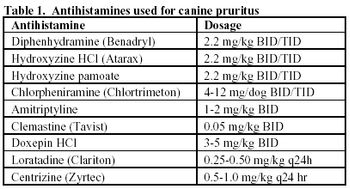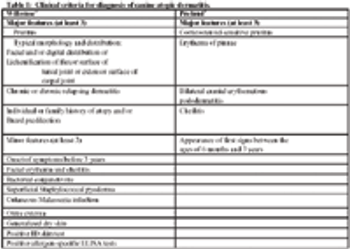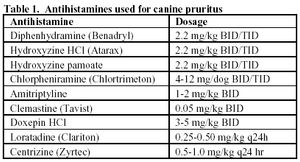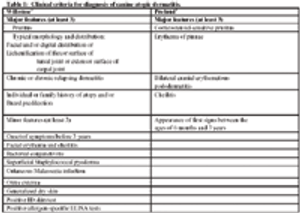
A systematic approach to a dermatologic diagnosis begins with a good history followed by a thorough physical examination.

A systematic approach to a dermatologic diagnosis begins with a good history followed by a thorough physical examination.

Pruritus is defined as an irritating, nonadapting cutaneous sensation that evokes the impulse to scratch.

Canine pruritus has many different etiologies and pathophysiologic mechanisms.

Keratinization and seborrheic disorders are both used interchangeable to describe microscopic and gross changes resulting from multiple etiologies.

The symptomatic treatment of feline pruritus is often complicated by the multiple predisposing causes including allergy, dermatophytosis, parasitic, viral, autoimmune and neoplastic diseases.

Canine atopy has traditionally been defined as an inherited predisposition to the development of IgE (reaginic antibodies) to environmental allergens resulting in allergic disease.

Many conditions can cause pruritus in dogs and cats, the most common being allergies (atopy, food, flea) and external parasites (e.g. Sarcoptes scabiei, Cheyletiella species).

Published: April 1st 2008 | Updated:

Published: April 1st 2008 | Updated:

Published: April 1st 2008 | Updated:

Published: April 1st 2008 | Updated:

Published: April 1st 2008 | Updated:

Published: April 1st 2008 | Updated: